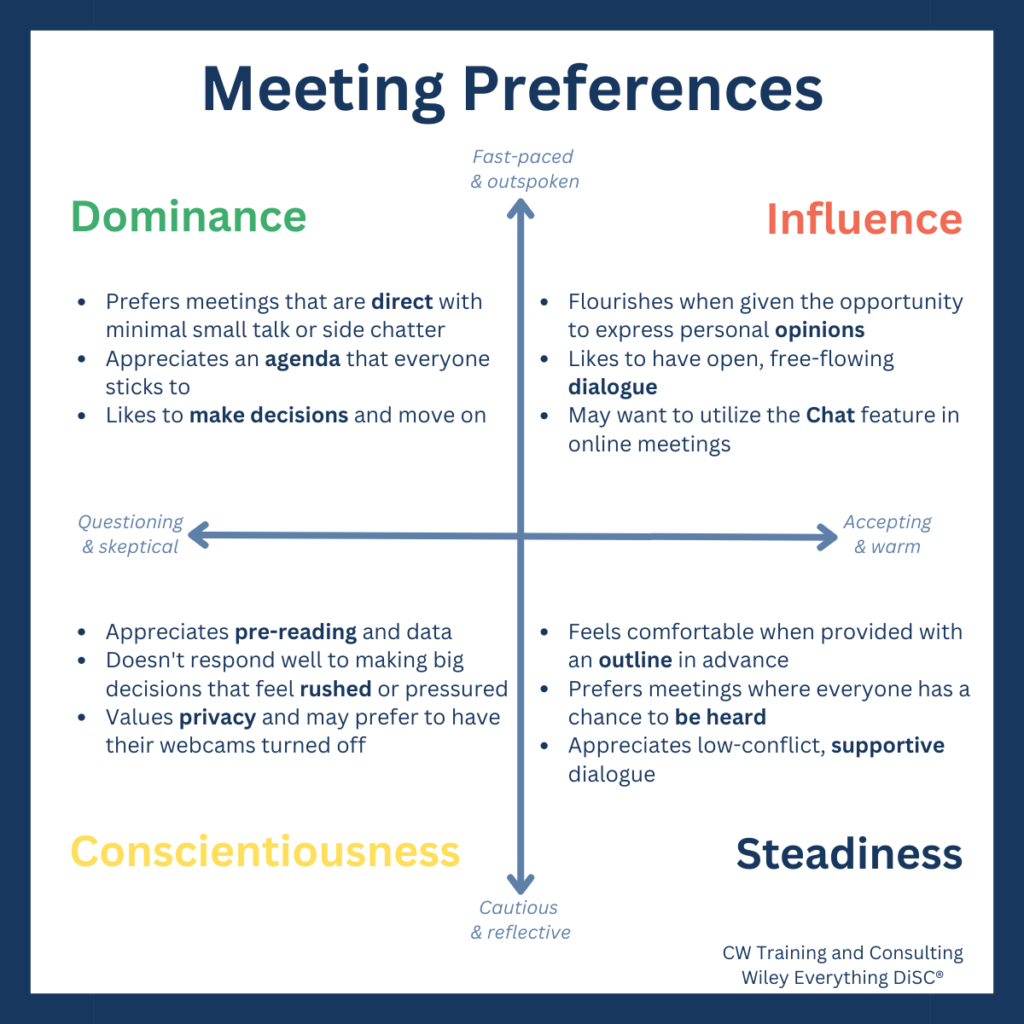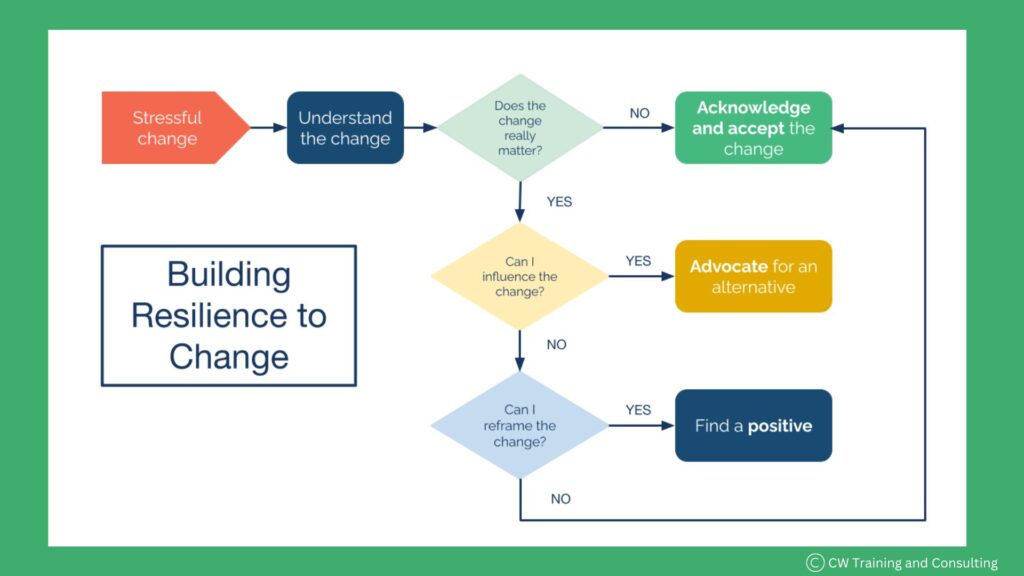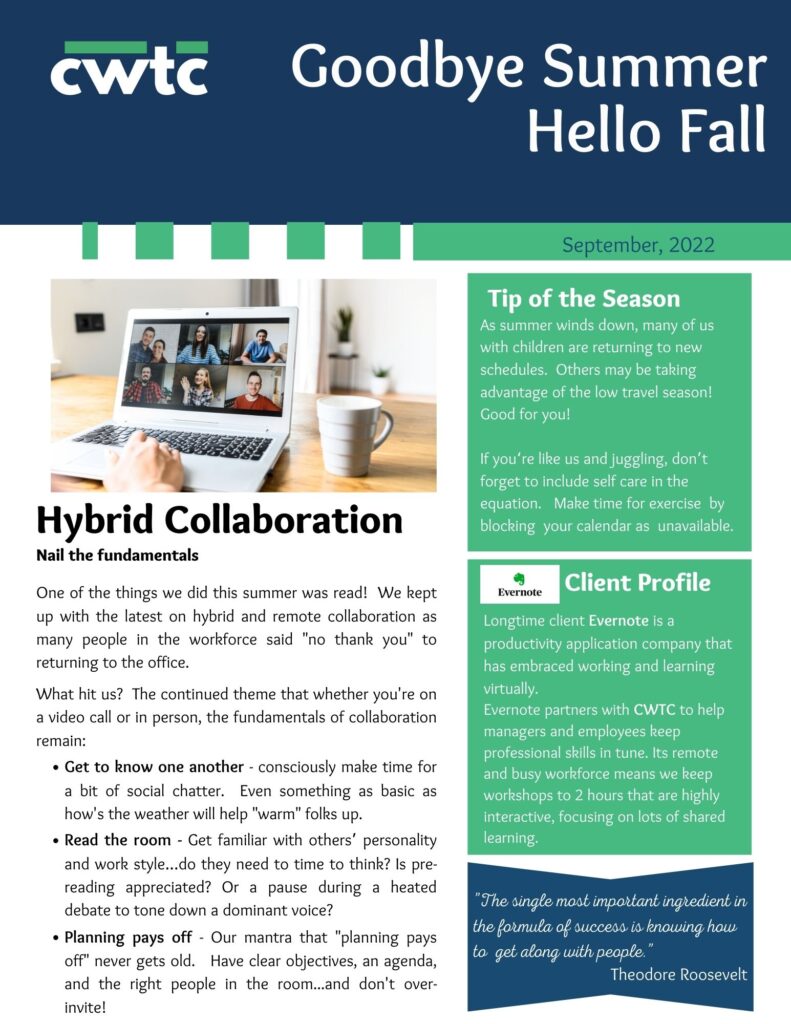
Meetings are an inescapable part of modern working life, and leading effective meetings is a powerful leadership skill. When we talk to colleagues and clients about their experiences leading meetings, one of the biggest difficulties they share is keeping control of discussions amid challenging behaviors.
Here are some statements from respondents to a recent survey we did that reflect this difficulty:
- Master how to tactfully and gracefully maintain (or regain) control of the meeting when one person has derailed it.
- Learn tools to diffuse heated discussions like disagreements on next steps or passionate points of view or tangents that derail the agenda.
- Learn how to move the meeting in the right direction without making anyone feel unheard.
To disarm difficult behaviors, read on for our three-step process that will elevate your meetings from chaotic to collaborative.

STEP ONE: Recognize nonproductive behaviors
Working for years with dynamic, growing organizations, we’ve identified five archetypes that represent some of the most common difficult meeting behaviors. In our live workshops, we get nods of recognition and sheepish raised hands when we share these archetypes and ask who sees themselves (and others!) in the descriptions.
Here are the first three archetypes. Do you tend to hold back in meetings even when you have information or an opinion that can help? We call that archetype The Watcher. How about those who share their opinion insistently, forgetting to listen to other voices? That’s The Know-It-All. Personally, I tend to repeat or restate what others say, imagining I’m lending my support or helping others to better understand. Being The Repeater might be helpful sometimes, but it can quickly get annoying. When we see our own opportunities for improvement, we can work on doing better and even find compassion for others.

STEP TWO: Rein in unruly behavior with judicious meeting facilitation
Most of the survey statements above reflect a desire for high-quality facilitation skills and tools, and we have facilitation guidelines that target the five archetypes.
For example, how do you regain control of the room with folks who interrupt and digress? We call this fourth archetype The Off-Tracker because they have trouble staying on topic and may dominate the conversation. We’ve got a three-part solution that works with anyone who tends to interrupt or dominate the discussion:
- Interrupt with tact. “Let me stop you there” or “Hold that thought” lets you retake control with grace.
- Validate using a “parking lot.” Make sure the person feels heard with phrases like “That’s a good idea” or “Interesting thought.” Then capture that idea or thought on a whiteboard or in a shared document that you return to at the end of the meeting. For each point listed on the parking lot, identify it as no longer an issue, to be discussed at a future meeting, or assigned as an action item to someone.
- Redirect with your agenda. Always have a desired meeting outcome and an agenda you can point to, ideally with specific time allocated for each topic. With an agenda, you can say “We better get back to the topic at hand before we run out of time.” Alternatively, as a meeting facilitator, you can choose to let the conversation continue if you think it’s important to the meeting’s desired outcomes.

STEP THREE: Leverage the strengths and talents of each archetype
Flip the script to elevate your meetings into high-performing collaborations. By consciously focusing on the positive, constructive attributes of each archetype, you can create opportunities for all your participants to shine.
For example, let’s take a look at The Naysayer, our final archetype. This archetype is always looking for the downside in an opportunity, the flaws in an argument, and the worst case in a situation. They may never show enthusiasm for an idea or offer constructive suggestions for improvement. What might be the strengths and talents of this behavior?
Consider rebranding The Naysayer as The Questioner—the one who excels at asking questions that no one else considers. Harnessing their ability to find flaws, poke holes in ideas, and identify risks and downsides can make your solutions better. They just want to make sure someone has heard and considered their concerns and often don’t need to know how their concerns are being addressed. You might ask them to quantify a risk so you understand its likelihood, and you can also ask for possible solutions if the risk warrants it. When asked, they can have creative and effective solutions to the issues they raise.
There you have it—a bit of our secret sauce to turn those unruly meetings into collaborative win-win sessions. Use our downloadable resource The Flipside in Meetings to help you recognize archetype behaviors and practice disarming the challenging and leveraging the strength in each.








